Description
The CQUAD4 entry defines a quadrilateral element that can be used as a membrane or shell. A shell element has bending stiffness while the membrane element does not. For both the membrane and shell formulations, the state of the stress in the element is plane stress. The elements do have strains through the thickness of the element, which will lead to thinning of the element.
Format
| 1 | 2 | 3 | 4 | 5 | 6 | 7 | 8 | 9 | 10 |
| CQUAD4 | EID | PID | G1 | G2 | G3 | G4 | THETA/MCID |
Example
| CQUAD4 | 61 | 11 | 101 | 111 | 201 | 202 | 0.0 |
| Field | Definition | Type | Default |
|---|---|---|---|
| EID | Element identification number. | Integer > 0 | Required |
| PID | Property identification number of a PSHELL or PCOMP property entry. | Integer > 0 | Required |
| Gi | Grid point identification numbers of connection points. | Integer > 0, all unique | Required |
| THETA | Material property orientation angle in degrees. | Real or blank | See Remark 5 |
| MCID | Material coordinate system identification number. | Integer ≥ 0 | See Remark 5 |
Remarks
- Element identification numbers must be unique with respect to all other element identification numbers.
- Grid points G1 through G4 must be ordered consecutively around the perimeter of the element.
- All the interior angles must be less than 180 degrees.
- Stresses are output in the global coordinate system unless THETA or MCID is used to define a local coordinate system.
- If THETA/MCID field is blank, field 5 of the PSHELL continuation entry will be used. If this field is also blank, then THETA = 0.0 is assumed.
- This element is identical to the CQUADR element.
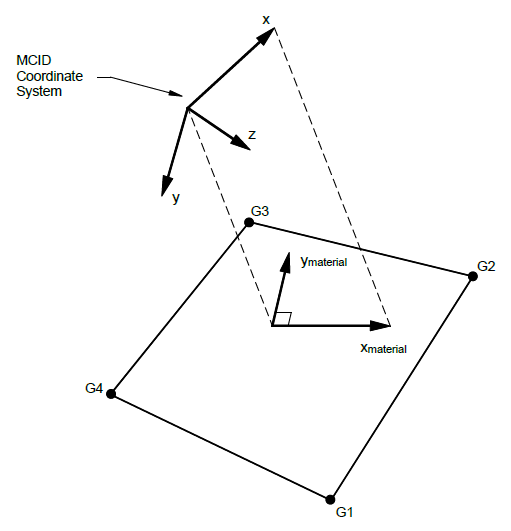
Figure 1: MCID coordinate system definition
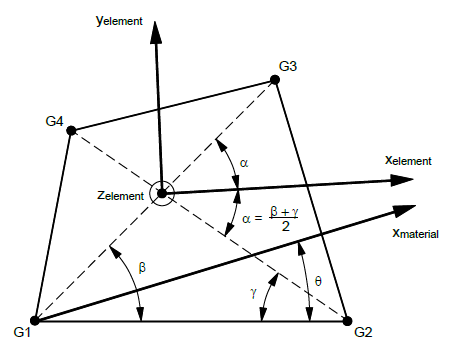
Figure 2: CQUAD4 element geometry and coordinate system
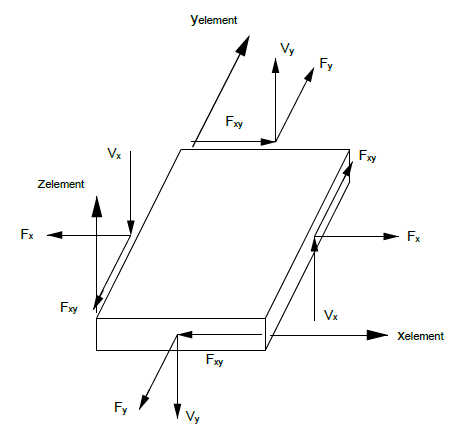
Figure 3a: Forces in CQUAD4 elements
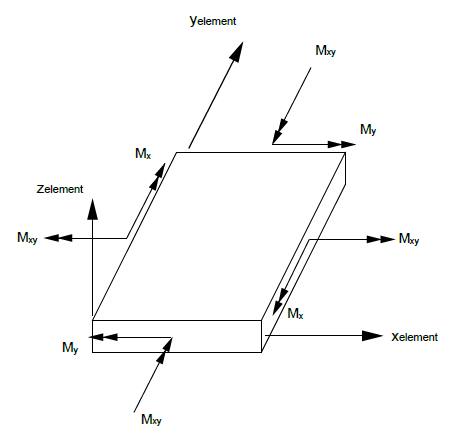
Figure 3b: Moments in CQUAD4 elements
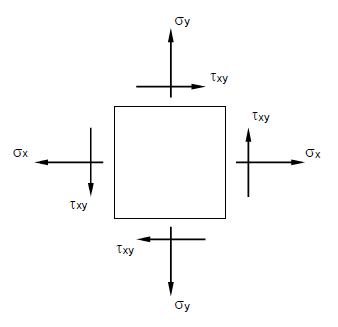
Figure 4: Stresses in CQUAD4 elements
